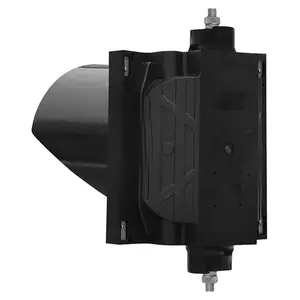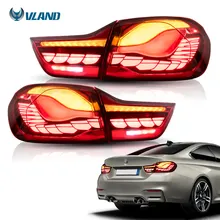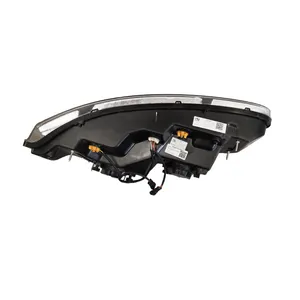What are Bus Lights
Bus lights are essential components of a bus's safety and signaling system. They are specialized lighting fixtures designed to provide illumination for both the interior and exterior of buses, ensuring visibility and communication to passengers and other road users. Bus lights come in various forms, such as headlights, taillights, turn signals, stop lights, and interior lights. These lighting elements are crucial for the bus's operational safety, especially during nighttime or in poor weather conditions, making them indispensable for public transportation, school buses, and private coach services.
The principle of how bus lights work is similar to other automotive lighting. They utilize a power source from the bus's electrical system and are controlled through switches and relays that are integrated into the vehicle's circuitry. Depending on the type of light, they may use incandescent bulbs, halogen bulbs, or increasingly common Light Emitting Diodes (LEDs). LEDs, in particular, are favored for their energy efficiency, longevity, and bright, clear light output.
For bus operators and fleet managers, ensuring that all bus lights are functional is not only a matter of legal compliance but also a key aspect of maintaining high safety standards. Properly functioning lights contribute to the visibility of the bus to other vehicles on the road as well as to pedestrians. Additionally, they facilitate the safe boarding and alighting of passengers by adequately illuminating steps and doorways.
Types of Bus Lights
A variety of bus lights cater to different functions and aspects of visibility. Each type plays a specific role in ensuring the smooth operation of bus services:
Headlights: Situated at the front of the bus, headlights are arguably the most important lights for night-time operation. They illuminate the road ahead and make the bus visible to oncoming traffic.
Tail Lights: Found at the rear, tail lights indicate the presence of the bus to vehicles behind it. They become brighter when the brakes are applied, signaling that the bus is slowing down or stopping.
Turn Signals: Also known as indicators, these lights flash to show the intended direction of turn or lane change, informing other road users of the bus driver’s maneuvers.
Stop Lights: Activated when passengers are boarding or alighting, stop lights alert other vehicles to halt or pass with caution.
Interior Lights: These ensure a well-lit cabin for passenger comfort and safety. They help in navigation through aisles and in reading schedules or tickets.
Emergency Exit Lights: These are critical for guiding passengers towards exits in case of emergencies.
Marker Lights: Positioned on the sides and sometimes on top of buses, marker lights help in gauging the dimensions of the vehicle during poor visibility conditions.
How to choose Bus Lights
Choosing bus lights requires consideration of several factors that ensure compatibility and meet safety standards. Here’s what businesses need to keep in mind:
Firstly, businesses should match bus light specifications with their vehicle model. Whether it’s a universal fit or specific to brands like Golden Dragon or Mercedes-Benz, compatibility is key. Secondly, material durability is important – options range from plastic to stainless steel – each offering different levels of durability and cost-effectiveness.
Moreover, light type is crucial; LED lamps have become popular due to their energy efficiency and long lifespan. Color coding is also significant; certain colors like red for tail lights and amber for turn signals are standardized for specific functions.
Voltage requirements should align with the bus’s electrical system; most buses operate on 24V systems. For those looking to integrate smart solutions, functions like remote control might be considered.
Lastly, consider where these lights will be applied – from schools to hospitals or public transport hubs – each environment may demand different lighting solutions for optimal visibility and safety.
Best Bus Lights on Alibaba.com
For businesses seeking reliable and comprehensive selections of bus lights, Alibaba.com stands out as an exceptional marketplace. With an expansive inventory provided by numerous suppliers across the globe, businesses can find an array of lighting solutions tailored to their specific needs without compromising on quality or affordability. Alibaba.com facilitates a seamless procurement process by allowing buyers to communicate with suppliers directly for custom requirements while offering Trade Assurance services that protect payments until order fulfillment is confirmed.
Alibaba.com's platform simplifies international trade by connecting buyers with reputable suppliers who have been vetted for their product quality and reliability. This fosters trust among businesses when sourcing parts like bus lights which are vital for vehicle safety and compliance with transportation regulations. With a user-friendly interface that supports local languages and mobile transactions, Alibaba.com brings convenience alongside its vast product offerings – making it an ideal destination for sourcing wholesale bus lights effectively.
Common FAQs for Bus Lights
What types of bus lights are essential for legal compliance?
Bus lights essential for legal compliance typically include headlights, tail lights, turn signals, stop lights, and emergency exit lights. These must function correctly to meet transportation regulations.
How do LED bus lights compare to traditional incandescent bulbs?
LED bus lights offer greater energy efficiency, a longer lifespan, and brighter illumination compared to traditional incandescent bulbs, making them a preferred choice for modern bus lighting systems.
Can bus lights be customized to fit different bus models?
Yes, bus lights can be customized to fit different bus models. It's important to ensure that the specifications match the make and model of the vehicle for proper installation and function.
What materials are bus lights typically made from?
Bus lights are typically made from durable materials such as plastic, PC (Polycarbonate), ABS (Acrylonitrile Butadiene Styrene), and metals like aluminum or stainless steel to withstand various environmental conditions.
Are there specific colors that must be used for certain types of bus lights?
Yes, there are standardized colors for specific types of bus lights; for example, red is commonly used for tail lights and amber for turn signals to conform with road safety standards.
What voltage are most bus lighting systems designed to operate on?
Most bus lighting systems are designed to operate on a 24V electrical system, which is standard for many commercial vehicles.
Is it possible to retrofit older buses with LED lighting systems?
Yes, it is possible to retrofit older buses with LED lighting systems. This can improve energy efficiency and reduce maintenance costs over time.
How does one ensure that the bus lights purchased meet safety standards?
To ensure that purchased bus lights meet safety standards, businesses should source from reputable suppliers and verify that the products have the necessary certifications and approvals.
Can bus lights be operated remotely or through automated systems?
Some modern bus light systems come with features that allow for remote control or integration with automated vehicle management systems.
What should be considered when choosing interior cabin lighting for buses?
When choosing interior cabin lighting for buses, factors such as passenger comfort, energy consumption, and ease of maintenance should be considered. Brightness levels and the ability to control or dim the lights may also be important features.
Are there different types of bus marker lights available?
Yes, there are different types of bus marker lights available that vary in size, shape, brightness, and mounting options to suit various applications and vehicle designs.
How does the application place affect the choice of bus lights?
The application place affects the choice of bus lights in terms of required visibility levels, durability against environmental conditions, and specific functions needed such as high-intensity lighting for highway travel or softer lighting for urban areas.










































 浙公网安备 33010002000092号
浙公网安备 33010002000092号 浙B2-20120091-4
浙B2-20120091-4